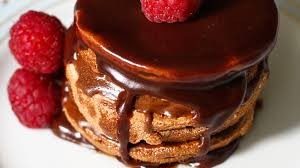THERE ARE THREE DIFFERENT types of cocoa bean which are used in chocolate production today. They are the noble Criollo, the common Forastero and a hybrid between the two, the Trinitario. Criollo and Trinitario are often referred to as fine or flavour cocoa beans, while Forastero is considered the ordinary or bulk bean for mass production (although there are exceptions to this rule — see below). Over 90% percent of the world’s cocoa is bulk production, mostly from the Forastero bean. The remainder is fine/flavour cocoa, from most of the Trinitario and all of the Criollo varieties.
What the fine Arabica bean is to coffee, the even finer and rarer Criollo bean is to chocolate. Criollo chocolate has a distinctly reddish colour, and an equally distinctive complex taste which can include flavours of caramel, nuts, vanilla and tobacco. Criollo bars are fairly rare and should definitely be sampled if encountered. That said, the taste might not be everyone’s favourite as it differs considerably from that of the more common Trinitario and Forastero varieties, which generally define the taste of dark chocolate as most people know it. These tastes however are fairly recent — two hundred years ago Criollo was the predominant cocoa bean. The reason for the general scarcity of Criollo cocoa today is the lack of resistance of the Criollo tree towards disease, which is why the more robust Forastero now dominates the world-wide market for cocoa. Today, most Criollo trees are closer to Trinitario than their pure ancestors. The most important Criollos are Ocumare 61 and the well-publicized Chuao, both of which are found in Venezuela. Only very few true Criollo trees remain. Probably the best known of these pure Criollo varieties is Porcelana — also from Venezuela — which can be found in a few bars mentioned on this site.
This is the equivalent of the Robusta bean in coffee, namely the most widespread variety which has been cultivated for mass production. Originally from the Amazon region, there are many types of Forastero trees all over the world, the most ubiquitous variety being the Amenolado found in Brazil and West Africa. While most Forastero is bulk cocoa, there are exceptions, such as the Ecuadorian Cacao Nacional or Arriba Forastero which is used as fine/flavour cocoa. In 2011 a rare Peruvian Nacional Forastero was discovered by chance. Forastero means “foreigner” in Spanish, in contrast to Criollo which is the word for “native”. This distinction was made by the Spanish who at first imported Criollo cocoa exclusively from Venezuela and thus regarded Criollo as the original variety of cocoa, as opposed to the “foreign” Forastero from the Amazon region.
Trinitario is a hybrid between the Criollo and Forastero trees and originated in Trinidad. Around 1678, Criollo trees from Venezuela had been planted in Trinidad, and in the following decades they went on to produce some of the finest Criollo of the time. Then, in 1727, disaster struck. The exact reasons are still unknown and theories vary from fungi and disease to speculation whether the increasingly mature trees imported decades earlier were becoming more and more sensitive to Trinidad’s soil and climate, for which they may have not been suited. In any case, the crop failure of 1727 delivered a fatal blow to Trinidad’s cocoa economy, which was revived in 1756 with the introduction of the more robust Forastero from the Amazon region. The new variety was combined with the remaining Criollo trees, resulting in the new Trinitario variety. In the 19th century Trinitario trees spread across the globe and can be found in Venezuela, Ecuador, Cameroon, Samoa, Sri Lanka, Java and Papua New Guinea. Trinitario is the predominant fine/flavour cocoa and is the most likely bean to be found in high-quality dark chocolate today. A particular mention should go to the Venezuelan Carenero and Rio Caribe varieties, which are very highly regarded. An exception is the Trinitario from Cameroon which is generally classified as bulk produce.
Showing all 3 results







